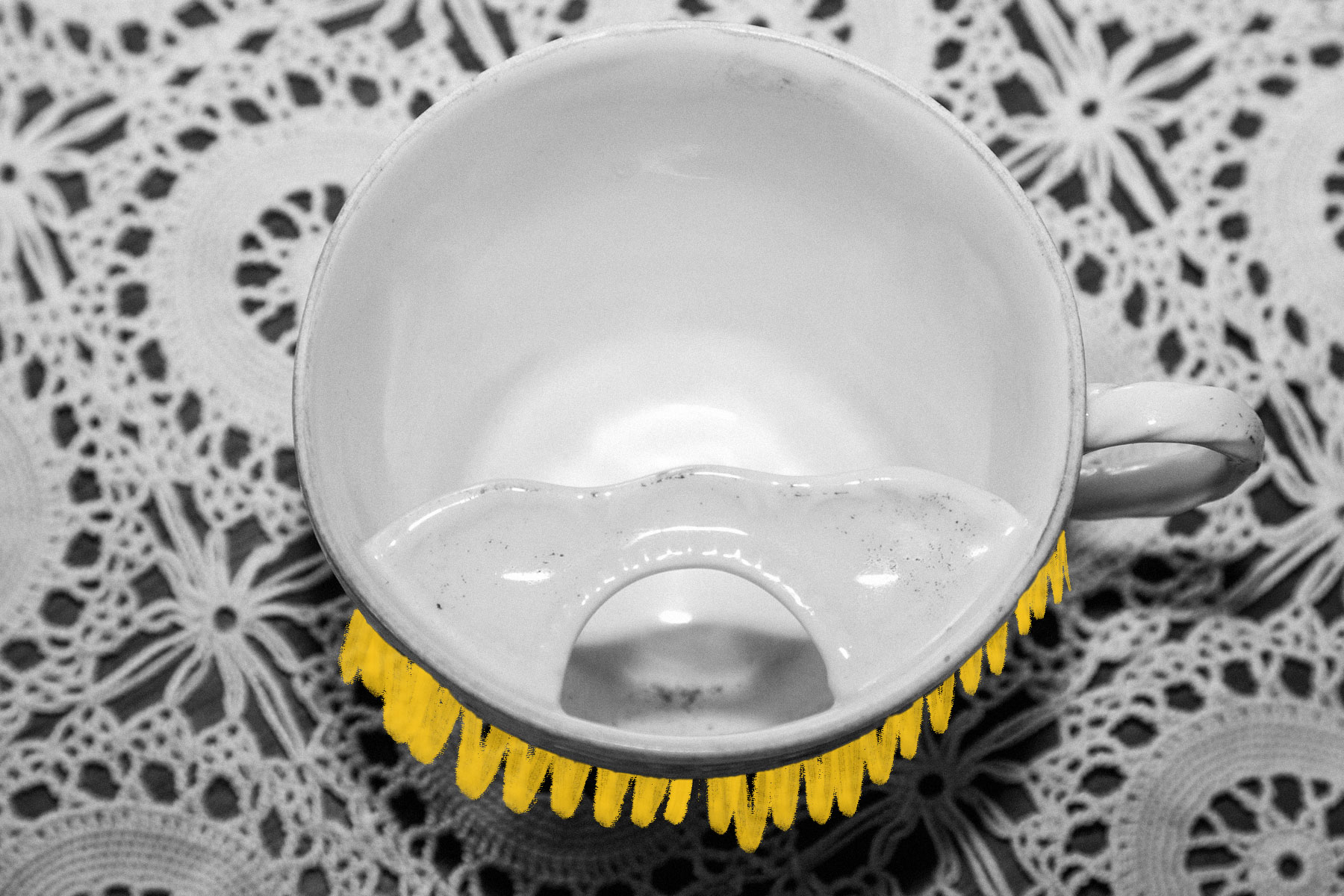Victorian England had special teacups for men with mustaches.
Mustaches were a fashionable choice during Britain’s Victorian era, but life with a bushy upper lip wasn’t without its challenges, especially when it came to enjoying a hot cup of tea. Englishmen often used mustache wax to style their facial hair, which melted straight off their upper lip into the warm drink. In response to this predicament, an inventor named Harvey Adams developed an ingenious workaround in the 1870s: the “mustache cup.” The cup featured a traditional shape, with an added built-in ceramic ledge for men to rest their mustaches against, as well as a tiny hole for liquid to pass through. Effectively, it was an adult sippy cup. The mustache cups came in a wide variety of sizes, including larger “farmers’ cups” for pints of tea and tiny porcelain cups embossed with the owner’s name. These teacups were popular not just in the U.K., but also in the U.S., where they were sold at stores such as Sears and Marshall Field’s.
Believe it or not, the mustache cup wasn’t the only 19th-century kitchen invention inspired by facial hair. In 1868, a New York engineer named Solon Farrer created the mustache spoon, which was essentially a spoon with a lid that lifted up. In 1873, inventor Ellen B. A. Mitcheson tweaked Farrer’s idea and submitted a patent of her own. Mitcheson’s version added a piece of holed-out metal to the side of the spoon that rested against the lip, thus keeping the mustache from coming into direct contact while slurping down soup. The concept was largely similar in design to the mustache cup, allowing hot liquids to travel through a tiny hole in the spoon while maintaining those perfectly waxed whiskers.















